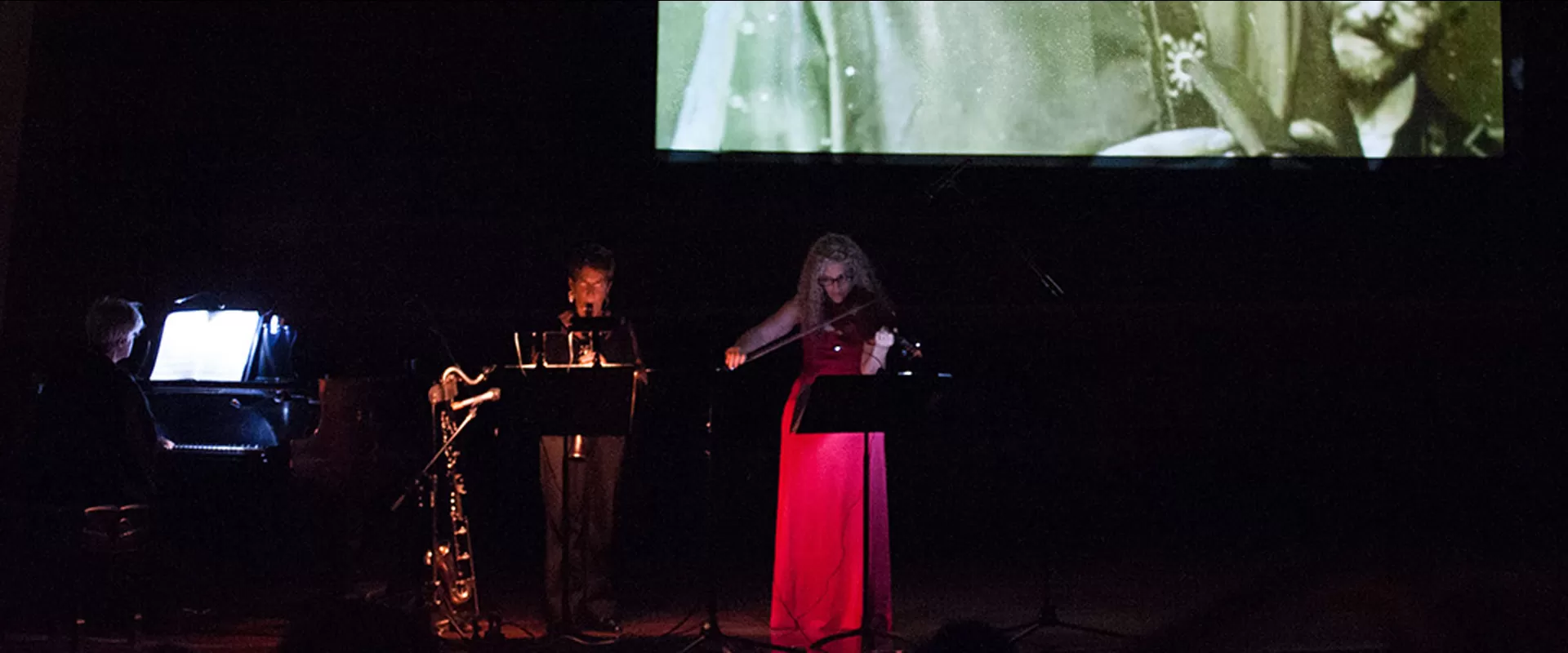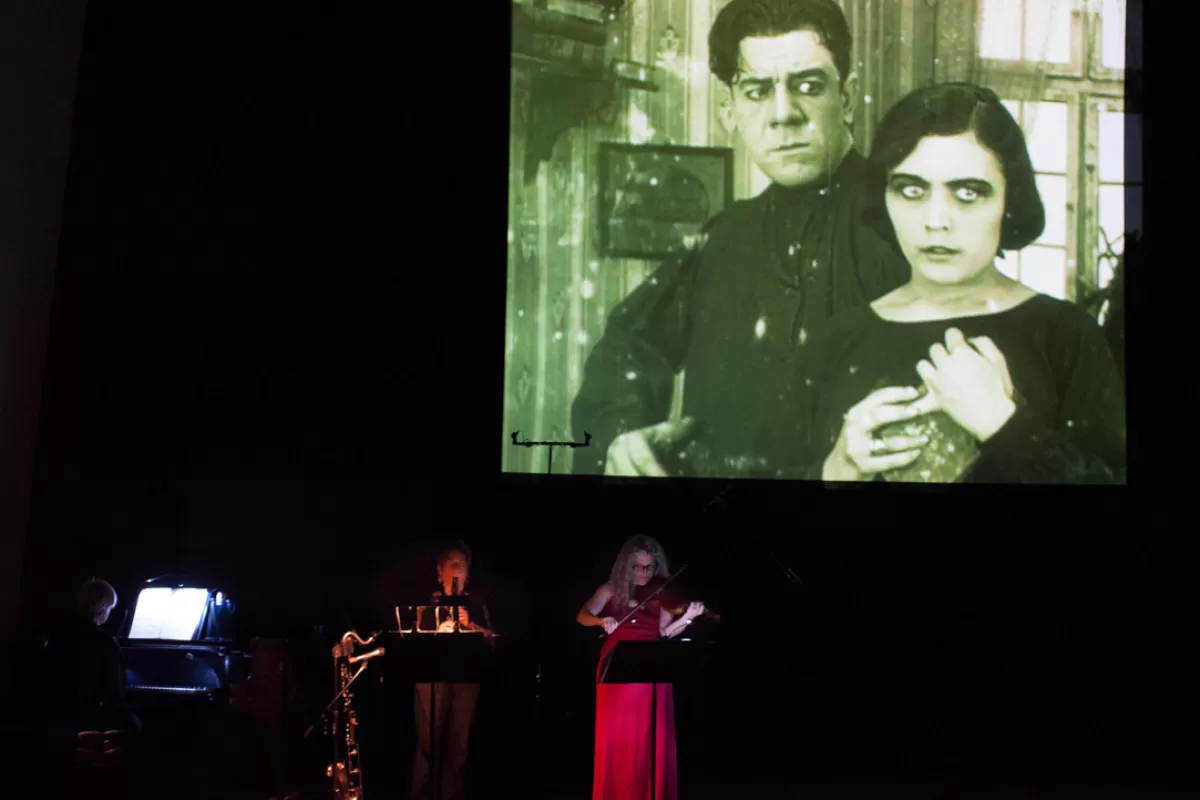The Yellow Ticket (arrangement)
Alicia Svigals
(b. New York City, New York, 1963)
Expanded musical score
Commissioned by Music of Remembrance
The Yellow Ticket music composition project by Alicia Svigals was first commissioned by the Foundation for Jewish Culture’s New Jewish Culture Network, and was made possible by the Arthur Tracy “The Street Singer” Endowment Fund. The expanded musical version for clarinet, violin and piano (2014), was commissioned by Music of Remembrance and had its world premiere at Music of Remembrance’s Holocaust Remembrance Concert on May 12, 2014, Benaroya Hall, Seattle, WA.
Historical Background
Directed by Victor Janson and Eugen Illès, The Yellow Ticket (1918) was one of Pola Negri’s first films for the German film studio UFA, and Paramount later released it in the U.S. in 1922. Negri, born in Poland in 1897, was the first exotic European actress imported to Hollywood during the silent film era and its highest paid actress, renowned for her flamboyant style and independent spirit. Although Negri is best known for her subsequent “vamp” and femme fatale roles both for German and American film, The Yellow Ticket offered an opportunity to play an atypical role of a sensitive, ambitious scholar.
The Yellow Ticket is set prior to the October Revolution, when sex work was legal in Tsarist Russia. Despite the government’s liberal policies on prostitution, anti-Semitic laws required Jewish women from the Pale of Settlement to possess prostitution papers in order to reside in cities outside the Pale of Settlement. The film, which explores social issues such as human trafficking, ethnic and religious discrimination and poverty, is based on Abraham Schomer’s 1911 Yiddish melodrama Afn Yam un “Ellis Island” (At Sea and Ellis Island) that was subsequently produced on Broadway in 1914 in an unauthorized English-language version written by Michael Morton. Several cinematic adaptations of the story preceded and followed the UFA production. An additional literary source is Aleksandr Amfiteatrow’s 1908 novel The Yellow Pass.
Filmed partly on location in German-occupied Warsaw during the last year of World War I, the melodrama has several historical merits. Exteriors include rare documentary footage of Nalewki, Warsaw’s bustling Jewish district, before the neighborhood and the majority of its residents were destroyed by Nazi Germany. In addition, the film is a curious example of propaganda used to portray the Russian regime as inhumane and heartless.
In Memoirs of a Star (1970), Negri argues that The Yellow Ticket was remarkably progressive during a cinematic period of ethnic stereotyping: “Its sympathetic portrait of Jews might displease some of the population, but a vast majority would be very moved by it. It might even help to spread a little tolerance and understanding, and this would be no small accomplishment during those long enervating years of war.” - Andrew Ingall, Foundation for Jewish Culture
Alica Svigals offers the following remarks:
When I was commissioned to compose a new score for legendary silent movie star Pola Negri's 1918 film The Yellow Ticket, I found myself confronted with several intriguing challenges. This wonderful and strange work is a story about Jews, but made by and mostly for non-Jews. I wished to be the missing Jewish artistic collaborator who might bridge that gap by providing authentic sounds drawn straight from the Jewish soul. More than that, I wanted to bridge that gap between our time and theirs, which might deprive us of an emotional response to the story—a response which its original audience would surely have had.
The social mores depicted are a little mysterious now, and the pressures that drive the characters are not as self-evident as they would have been when the film was made. The narrative conventions of film, which are a second language to us, had not yet been formulated, and our cinematic technology renders the action a little faster than it should actually be. So I felt my task was to help the viewer overcome these obstacles: to use the soundtrack to clarify the story’s structure and through the music to arouse in the viewer the profound emotions depicted in the film.
I went about composing by watching each scene over and over until I was familiar with each gesture of the actors and every movement of the camera; in some scenes I could almost detect a steady tempo, and I used this as a basis for the melodies. Out and about in the streets of New York, I could still see the film in the corner of my mind’s eye and sounds to go with it would pop into my head.
The score is influenced by klezmer and non-Jewish East European folk forms, Béla Bartók and Ernest Bloch, European café music, the cantorial tradition, and my own particular fiddling style.





